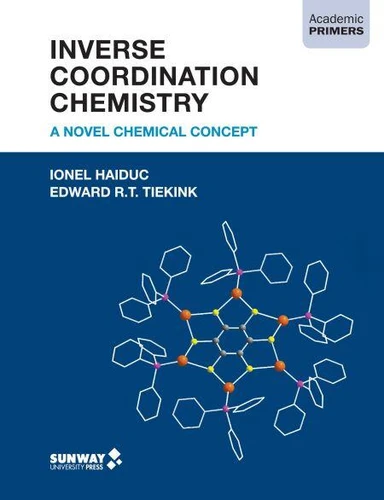Inverse Coordination Chemistry: A Novel Chemical Concept. Academic Primers
Par : ,Formats :
Disponible dans votre compte client Decitre ou Furet du Nord dès validation de votre commande. Le format ePub est :
- Compatible avec une lecture sur My Vivlio (smartphone, tablette, ordinateur)
- Compatible avec une lecture sur liseuses Vivlio
- Pour les liseuses autres que Vivlio, vous devez utiliser le logiciel Adobe Digital Edition. Non compatible avec la lecture sur les liseuses Kindle, Remarkable et Sony
 , qui est-ce ?
, qui est-ce ?Notre partenaire de plateforme de lecture numérique où vous retrouverez l'ensemble de vos ebooks gratuitement
Pour en savoir plus sur nos ebooks, consultez notre aide en ligne ici
- FormatePub
- ISBN978-967-5492-32-7
- EAN9789675492327
- Date de parution01/12/2020
- Protection num.pas de protection
- Infos supplémentairesepub
- ÉditeurSunway University Press
Résumé
Inverse Coordination Chemistry: A Novel Chemical Concept features and discusses the interesting array of inverse coordination complexes, from those with monoatomic or polyatomic centres to those with organic molecules as centres. While traditional coordination complexes consist of a metal atom at the centre surrounded by inorganic ligands, inverse coordination complexes show a reversed topology: a central non-metal atom surrounded by metallic ligands. Illustrative and concisely written, this book is a timely and comprehensive introduction to this exciting but largely overlooked field of inverse coordination in inorganic chemistry.
This book serves as an invaluable resource for chemists, educators, and students.
This book serves as an invaluable resource for chemists, educators, and students.
Inverse Coordination Chemistry: A Novel Chemical Concept features and discusses the interesting array of inverse coordination complexes, from those with monoatomic or polyatomic centres to those with organic molecules as centres. While traditional coordination complexes consist of a metal atom at the centre surrounded by inorganic ligands, inverse coordination complexes show a reversed topology: a central non-metal atom surrounded by metallic ligands. Illustrative and concisely written, this book is a timely and comprehensive introduction to this exciting but largely overlooked field of inverse coordination in inorganic chemistry.
This book serves as an invaluable resource for chemists, educators, and students.
This book serves as an invaluable resource for chemists, educators, and students.



